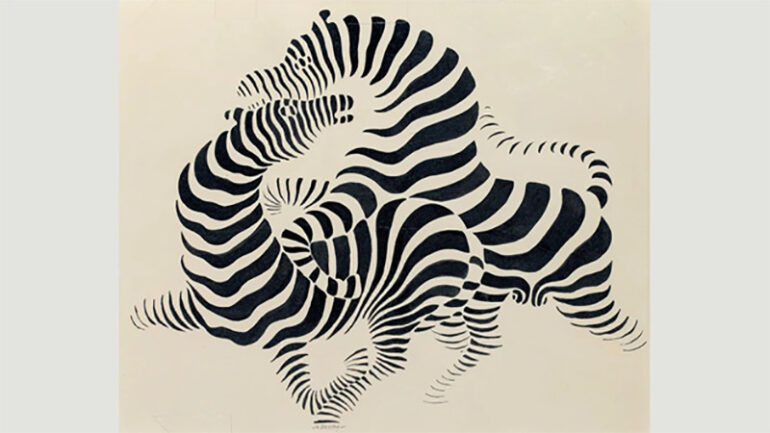Have you encountered paintings or drawings where you become more perplexed? These paintings are usually made of lines in various sizes and shapes and come in monochromatic colors.
What you see are examples of optical illusion art or op art that started in the early part of the 1960s, which is part of the broader abstract art form. Optical illusion art needs ingenuity in math, meticulous planning, and technical skills. Optical art can manipulate the rules of perception, so a viewer trying to decode the op art painting may see movement, three-dimensional forms, hidden images, etc.
Using block colors and graphic shapes creates the illusion of depth and movement. The skillful op art artist can manipulate the complex ways the human eyes perceive what is in front of them.
Optical illusion art
Optical illusion art, shortened to op art, coined by Time Magazine in 1964, relies on optical illusions to fool the viewers’ eyes. Some people call it retinal art or optical art. Op art is on a different level. It’s a form of abstract art, particularly non-objective art. Likewise, it’s also a form of kinetic art related to geometric design that gives off feelings of vibration or movement. Optical art was only in black and white, but artists eventually introduced color.
Based on history, the style of optical art may have its roots in Abstract Expressionism and the works of Victor Vasarely, a kinetic artist born in Hungary in 1908 but practiced his profession in France. His work that started the op art movement was titled “Zebras” (1938).
Modern interest in optical art rose in 1965 due to an important Op Art exhibition in New York. Due to the exhibition, which caught public interest, the style was revived in interior decorations, fashion design, music albums, advertising art, and print graphics. However, the interest was short-lived, and by the end of 1960, the op art movement had all but disappeared.
History of optical art
The beginnings of optical art go back to painting theories before the war, contrary to what most people believe. It includes the constructivist ideas perpetrated by Germany’s Bauhaus design school of the 1920s. The school stressed that formal design is vital in creating a particular visual effect. When the design school closed in 1933, many lecturers moved to the United States. For example, Josef Albers taught at North Carolina’s Black Mountain College and in Chicago. During his teaching days in the U.S., he produced his series Homage to the Square, which showed traces of optical art. Victor Vasarely experimented with different visual tricks, including trompe l’oeil. Other notable artists, such as John McHale, created works in this style, such as his Dazzle panels that were exhibited in 1956. Around 1960, another proponent of optical art, Bridget Riley, developed her distinctive style using black and white paints.
Characteristics of optical art
Optical art leans more on the abstract style, using geometric shapes to create different types of optical illusion, which, when viewed, may cause the eye to find a sense of movement on the painting’s surface. The shapes, colors, and patterns the artist used are usually selected for their qualities to provide illusion rather than for their emotional or substantive content. Opt art painters cleverly use negative and positive spaces to produce the desired illusions.
Optical art utilizes the functional relationship between the brain and the retina. Particular patterns cause confusion between the eyes and the brain in how the eyes see the patterns and the brain interpret them, which can result in perceiving different effects.
The first effect is movement, caused by the specific black-and-white geometric patterns. In some paintings, the specific combination could cause dizziness. The other effect is the after-images that appear after viewing paintings and installations with specific colors or color combinations. The interaction of the different colors in the painting, like reverse contrast, successive contrast, or simultaneous contrast, can also cause more retinal effects.
Even if op art’s effects are strange and, at times, nausea-inducing, the style still conforms to the traditional rules of fine art with its illusion of perspective and depth. Op art broadens its illusionary nature by disrupting the rules concerning optical perception.
Although op art became fashionable during the second half of the 1960s, its decline was rapid. However, there were minor revivals of the style over the years. Unlike traditional paintings, such as those created during the Renaissance, optical art did not represent reality. Rather, the artists made the viewers’ perception as the medium they work through, giving them the props or tools to get their distinct experiences.
Photo Attribution:
1st & featured image by https://blog.displate.com/wp-content/uploads/2021/07/img_60e8722c32130.
2nd image by https://cdn.thecollector.com/wp-content/uploads/2022/02/bridget-riley-op-art-blaze.jpg?width=1400&quality=55

